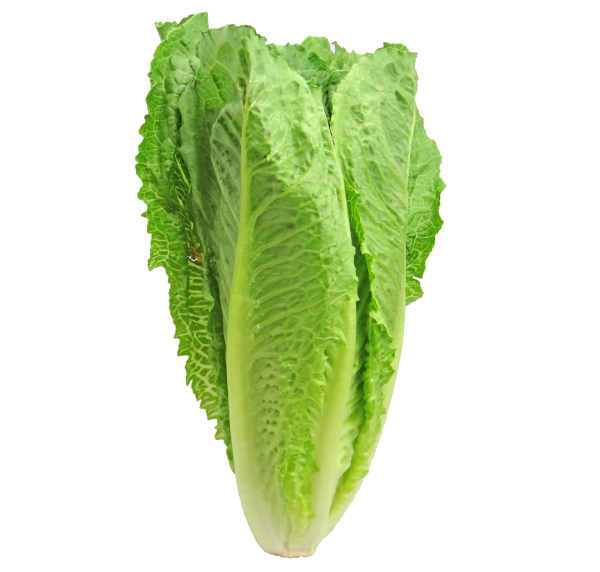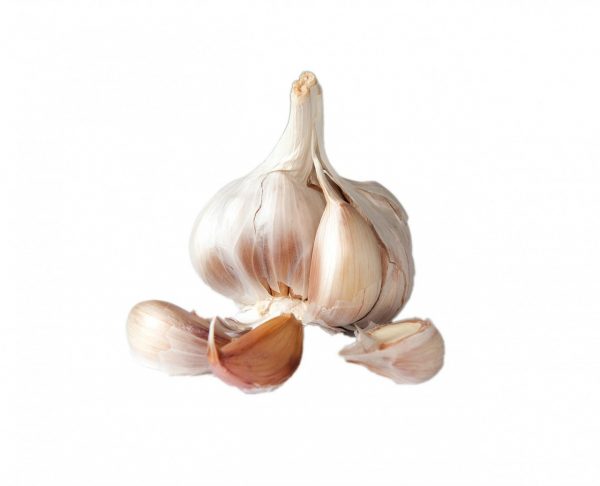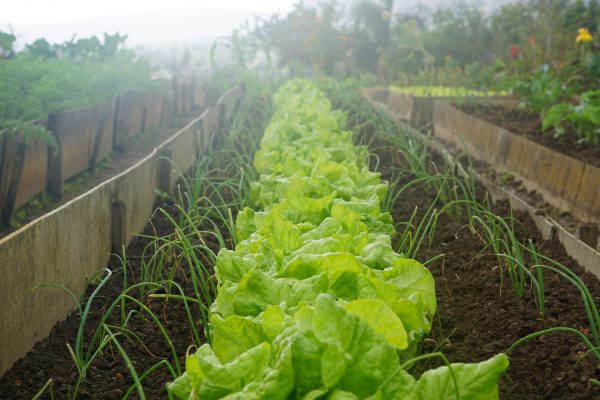This post may contain affiliate links. Please see my disclosure policy to learn more.
“Grow a Garden from Kitchen Scraps!
Did you know many of the veggie scraps you usually toss or compost can actually be replanted? With grocery prices on the rise, regrowing your own produce is a simple way to save money—and it’s surprisingly easy. Plus, several of these plants make great additions to your indoor space as houseplants!”
Celery

One of the easiest vegetables to grow yourself is celery. Simply cut off the bottom portion or base of your celery and place it in a small bowl or cup with warm water. Water should cover just the bottom of the celery; do not submerge it. Place in a sunny location and within a couple of days, you will see new growth coming up from the middle. In about a week, the new growth should be thicker and greener, and it will be time to plant in the soil. You can grow it in a pot, either indoors or outdoors, or plant it directly in your garden. Celery likes cooler temperatures and regular watering.
Romaine lettuce

Romaine lettuce can be grown the exact same way as celery. Cut off the bottom portion and place it in water for about a week until new leaves form. Then you can plant in soil or leave it in the water indoors; this can be done year-round. You will need to change the water every couple of days, but you should have large enough leaves to eat within 10-12 days. Planting in the soil will provide more nutrients for the lettuce and should result in more leaves being formed. This method will work for most red and green leaf lettuce.
Cabbage

Cabbage can be grown from leftover leaves. Place cabbage leaves in a bowl with a small amount of water and place them in a sunny location. Replace the water every couple of days. When you notice roots forming, you can plant in soil, or you can continue to grow in water, the same as with the lettuce.
Green onions

Green onions are grown similarly to celery and lettuce. After using the green portion of green onions, you can take the root portion of the green onion and place it in a cup of water, roots down, change the water out daily, and within a week or two, you will have new green tops that you can cut off and use continuously.
Garlic

Garlic is really easy to grow, but choose organic or non-sprayed ones, as treated ones will probably not grow. Break your garlic bulb apart into separate cloves, leaving the skin on. For a summer crop, you will want to plant your garlic in the fall and cover it with straw or mulch to protect it through the winter. Plant 1-3 inches deep with the flat bottom of the garlic down and pointed end up. Plant each clove 3-4 inches apart. Water thoroughly. Harvest garlic in the summer after the foliage dies.
Potatoes

How many times have you found your potatoes have sprouted? Don’t throw them out, plant them. Potatoes should be planted outdoors in early spring, a few weeks before the last average frost in your area. If the potatoes are large and have several eyes, then you should cut them into 2-inch pieces, leaving at least one eye per piece. Let dry for a couple of days before planting outside.
Smaller potatoes can be planted whole. Dig a trench 6-8 inches deep, plant potato pieces cut side down, eyes up, 12 inches apart. Cover with 3-4 inches of dirt. In a couple of weeks, when sprouts appear, cover them with 3-4 more inches of dirt. Repeat every couple of weeks, mounding the soil up over the potatoes, creating a hill to protect the potatoes from turning green in the sunlight.
For the best potato harvest, after the plant’s foliage has died back. Cut brown foliage to the ground and wait 10-14 days to dig potatoes. Make sure to do so on a dry day.
These are some of the easiest vegetable scraps to grow on your own, but almost any vegetable or fruit can be grown from the leftovers. Experiment and have fun growing your own food.
- 🌿【Complete 9-Herb Starter Kit】- Everything you need to grow a thriving indoor garden! Includes premium seeds (Basil, Rosemary, Thyme, etc.), 9 biodegradable pots, nutrient-rich soil discs, pruning shears, and markers—ready to plant instantly.
- 🌞【No Green Thumb Needed】- Perfect for beginners! Our step-by-step guide simplifies growing with soaking tips, ideal planting depth, and herb-specific care. Just add water and sunlight for guaranteed sprouts.
- 💎【Premium Quality Guarantee】- Higher germination rates with non-GMO, heirloom seeds + coconut coir soil (expands to 5x size!). Enjoy robust growth and pesticide-free herbs for cooking.
- 💧【🌱 VERSATILE INDOOR & OUTDOOR USE】- Whether in the kitchen, on the patio, or gracing a windowsill - cultivate your herb garden with ease. Effortlessly grow flavorful herbs like Basil, Mint, Coriander, Parsley and Chives.
- 🎁【The Gift of Fresh Flavors】- Elegantly packaged for moms, chefs, or plant lovers. A unique birthday/housewarming gift that keeps giving—fresh herbs and joy all year!
- HARVEST ANYWHERE & ANYTIME: Indoor gardening system efficient 24-watt LED grow light simulates optimal effects of sunlight. Technology optimized for plants, herbs garden LED panel can be adjusted to 180° maximum and 21inches maximum height, plants receive more illumination area, maximize photosynthesis, and also more convenient for pruning branch leaves. Hydroponics plants grow 5 times faster than soil, harvest fresh all year round
- QUIET SMART WATERING SYSTEM: Hydroponic growing system water pump with premium quality ceramic core technology, super quiet (less than 20 dB). The pump runs every 30 minutes, not only efficient and energy-saving but also provides oxygen for better root development. Indoor herb garden designed with the water shortage indicator, don't worry about forgetting to water
- SUPER EASY SETUP AND USE: Hydroponics comes with everything you need gardening plant grower germination kit (seeds not included) to start your garden. Automatically controls light on 24-hour cycle (16 hours on, 8 hours off). You just select the veggies or flowers & fruits light mode by buttons on the control panel, plants growth can be observed
- DETACHABLE, EASY TO CLEAN: LED light pole is detachable to avoid short circuits while cleaning plant lights for indoor growing, and the light pole is adjustable in height to accommodate changing hydroponics growing system indoor gardening plants. 3L large water tank with a see-through water level window, allowing one to know at a glance and add water in time
- INDOOR GARDENING GIFTS AND FUN: Indoor herb grower garden starter kit comes with 8 pods perfect for you to grow herbs and vegs such as basil, lettuce, rosemary, and tomatoes. These are not only cool things but also healthy and fresh! Ideal gift for family or gardeners and plant lovers, great experiment using hydroponic with your kids
- THE PERFECT PRESENT – DELUXE HERB GROW KIT WITH 8 PREMIUM AROMATIC HERBS. Surprise your loved ones with a thoughtful, practical set that keeps on giving. Beautifully packaged and gift-ready, it’s a unique kitchen present for food lovers, home chefs, family, and friends. Carefully selected, non-GMO seeds ensure strong germination and healthy growth. Whether it’s a Christmas surprise, Mother’s Day present, Father’s Day set, birthday gift, or housewarming kit, it inspires joy.
- HOLIDAY-READY SURPRISE. Easy to sprout and quick to develop, these herbs thrive on windowsills, countertops, or balconies, creating a green oasis at home. An ideal foodie present for creative cooks, a holiday basket alternative, or a stylish cooking set that stands out from the ordinary. A truly unique idea that works for family, friends, or coworkers. The indoor herb kit makes every meal brighter and every kitchen fresher, turning daily cooking into a celebration.
- FULL OF FLAVOR. This deluxe mix of 8 herbs is a treasure trove of taste and aroma. Rich in natural plant compounds, they add brightness and depth to everyday meals. Sprinkle fresh parsley on soup, add rosemary to roasted potatoes, stir oregano into pizza sauce, or blend lemon balm mint into smoothies. Perfect as a seasoning herbs set for cooking or a herbal tea kit for drinks. Enjoy fresh flavors year-round with this complete herb garden set for food lovers and home chefs.
- PERFECT FOR CELEBRATIONS. Each herb offers its own unique character, from delicate to bold. A Mother’s Day present that brings joy to cooking, a Father’s Day kit that enhances BBQs, or a birthday surprise for mom or dad that lasts far beyond the day itself. Even as an anniversary present, it symbolizes growth, care, and shared experiences. A meaningful choice for occasions where you want to show thought, love, and appreciation. A living present that keeps on giving joy.
- STYLISH AND SPACE-SAVING. Compact and productive bushes adapt indoors or outdoors. The elegant pots fit perfectly in kitchens, balconies, or living rooms without taking space, adding a green decorative touch to any environment. An ideal windowsill herb garden, countertop herb kit, or accent for home décor. Create your own oasis of freshness, where lush greenery meets culinary creativity. Perfect for apartments, houses, or offices. A set that combines beauty, utility, and smart design.
- 100% ORGANIC AND NON-GMO: There's no need to worry about intoxicants that may hinder your plant's growth because the Back to the Roots Mushroom Growing Kit is completely organic and not genetically modified; You can cook them however you want or add them to your favorite dishes
- GROW YOUR PLANT ALL YEAR-ROUND: This organic mushroom indoor kit allows you to grow your own crop all-year round; Just place the box near a window with indirect light, mist twice a day, and you'll see delicious, beautiful mushrooms growing within a week; Included in this kit is an organic plant-based soil infused with mushroom spawn and a booklet with instructions
- CONVENIENT AND EASY: Mushrooms are one of the easiest to grow indoors; All you need to do is open, spray daily with the included mister, and in 10 days you'll be harvesting your own mushrooms right out of the box; Each crop produces three to four servings of mushrooms, and each box can grow up two crops
- THE PERFECT GIFT: The perfect holiday gift, it comes in a beautiful packaging so that it's ready to be given to foodie, garden-loving and eco-conscious friends and family; This kit is also part of our Grow One Give One campaign, simpy share a picture on social media, tag us and use the campaign hashtag, and we'll donate a kit to a classroom of your choice
- GUARANTEED TO GROW: Made in the USA and 100% Guaranteed to grow. If you are not satisfied, simply message us and we will send you a Back To The Roots replacement








